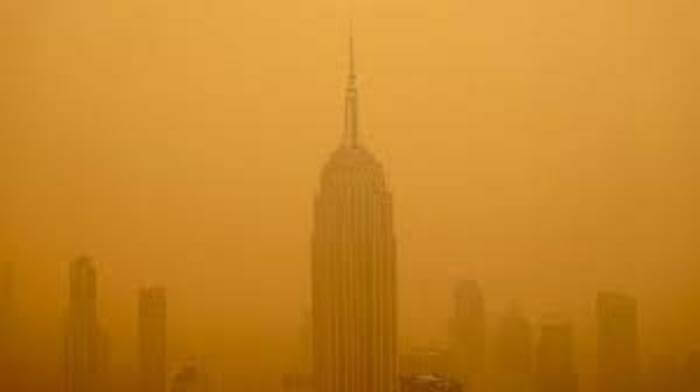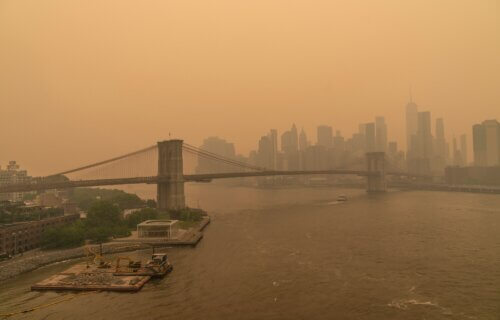MELBOURNE, Australia — Hundreds of wildfires burning in Canada have led to incredibly poor air quality and smog traveling over several areas of the eastern United States. During the first week of June 2023, New York City actually had the worst air quality anywhere on the planet. Now, a comprehensive new study investigating smoke exposure is raising major concerns about the long-term health impact of breathing in wildfire smog.
Researchers from Monash University report that a 10 μg/m3 increase in exposure to wildfire-related fine particulate matter (PM2.5) has an association with a 0.4-percent increased risk of both all-cause and non-accidental death, as well as a 0.5-percent higher risk of dying from neoplasms — an abnormal growth of tissue typical in cancer cases.
On June 8, 2023, at the peak of air pollution due to the Canadian wildfires, levels of PM2.5 reached as high as 460 μg/m3.
This project was the first to assess the relationship between long-term exposure, with an 11-year follow-up period, to wildfire-related PM2.5 and mortality. Notably, researchers found no significant associations connecting wildfire-related PM2.5 exposure with mortality from cardiovascular, respiratory, and mental diseases.

Breathing wildfire smoke can have ‘long-lasting adverse impacts’
Prior studies focusing on the health impacts of wildfire-related PM2.5 exposure have noted an increased risk of all-cause, cardiovascular, and respiratory mortality. However, according to lead researcher Associate Professor Shanshan Li, from the School of Public Health and Preventive Medicine, most of that work had focused on short-term impacts.
“We aimed to estimate the long-term impacts of wildfire-related PM2.5 exposure on mortality in adults using a large-scale national cohort database from the UK Biobank,” the researcher says in a media release. “To the best of our knowledge, this is the first population-based prospective cohort study to quantify the associations between long-term exposure to wildfire-related PM2.5 and mortality.”
These findings come from data provided by the UK Biobank, encompassing 492,394 participants enrolled between 2004 and 2010, all of whom are followed up regularly in the U.K. The participants submit biological samples and complete surveys regarding their lifestyle – all of which is linked to their health-related records.
Study authors extracted mortality data, including the underlying (primary) cause of death and date of death, which the team then mapped to wildfire-related PM2.5 exposure one to five years before death. All in all, Prof. Lee concludes these findings “show that wildfire-related PM2.5 exposure has long-lasting adverse impacts on all-cause, non-accidental, and neoplasm mortality.”
“Given the recent pollution levels in North America caused by the Canadian wildfires, our study linking long-term exposure to wildfire-related PM2.5 and mortality suggest that further research is urgently needed to provide more scientific evidence on this topic.”
The study is published in the Journal of Hazardous Materials.
You might also be interested in:
- Wildfire smoke can harm human health, even when the fire is hundreds of miles away – a toxicologist explains why
- Californians are moving to wildfire-prone areas, study finds
- Best Air Purifiers In 2023: Top 5 Devices For Cleaner Homes Most Recommended By Experts

